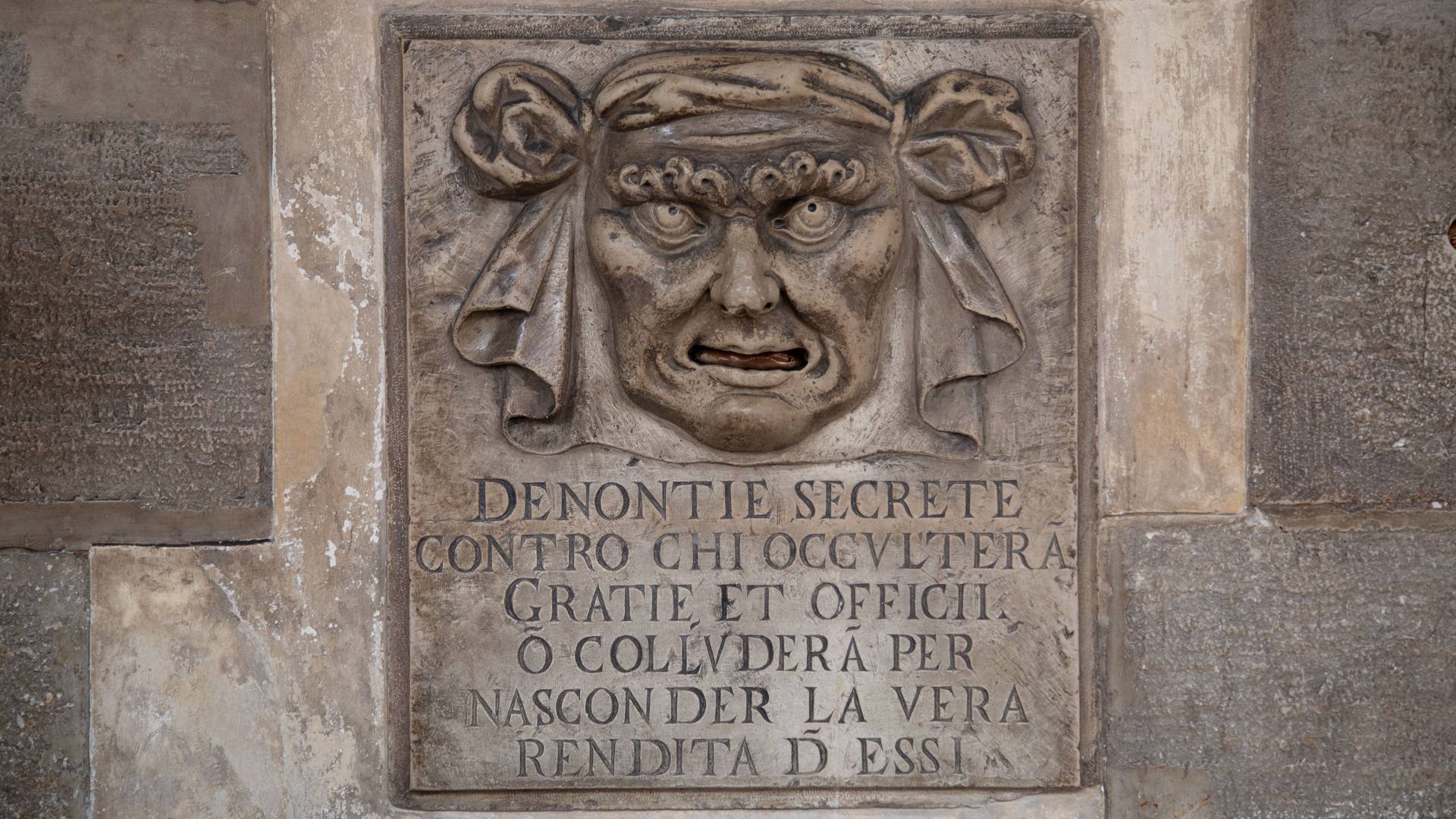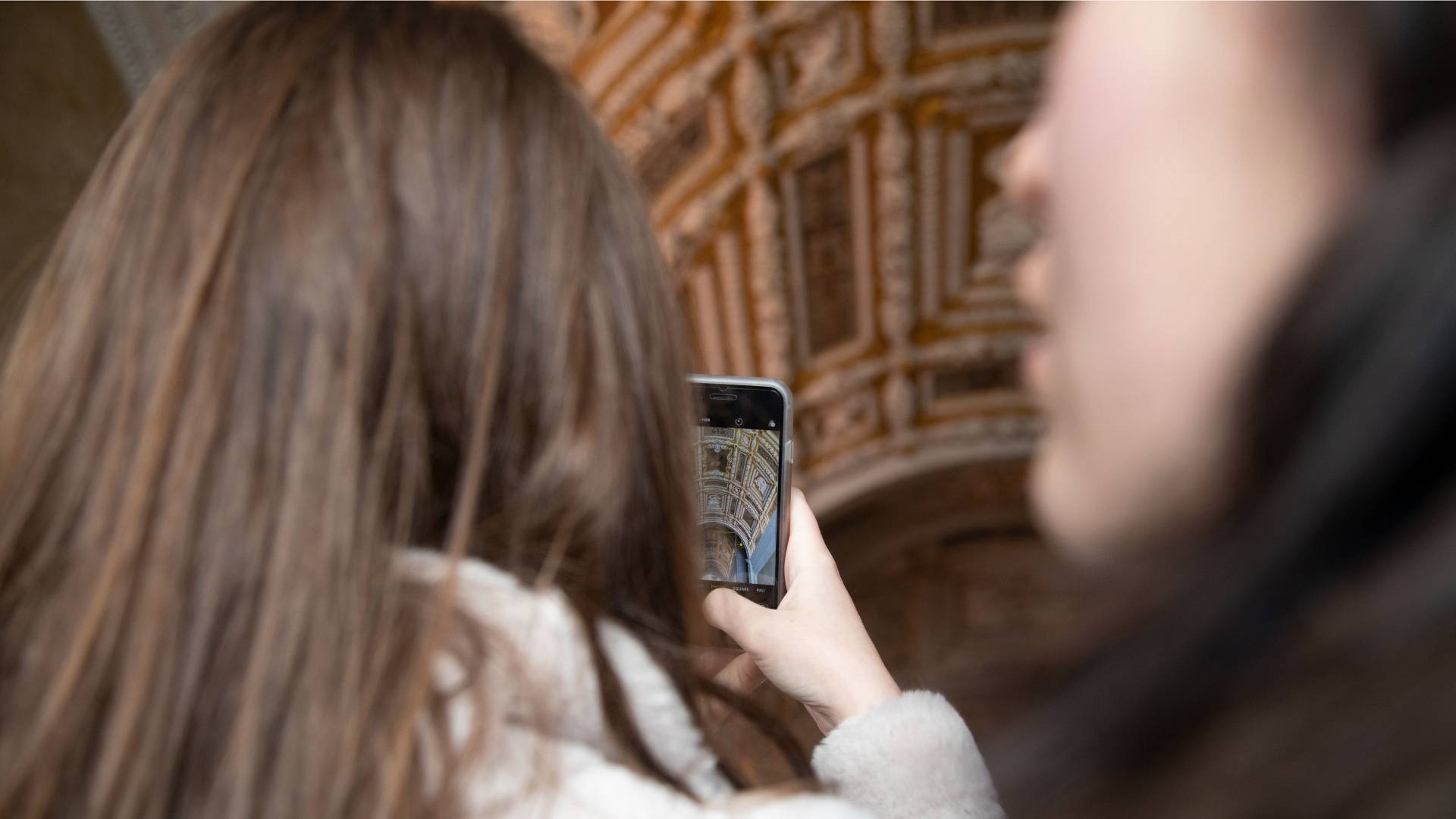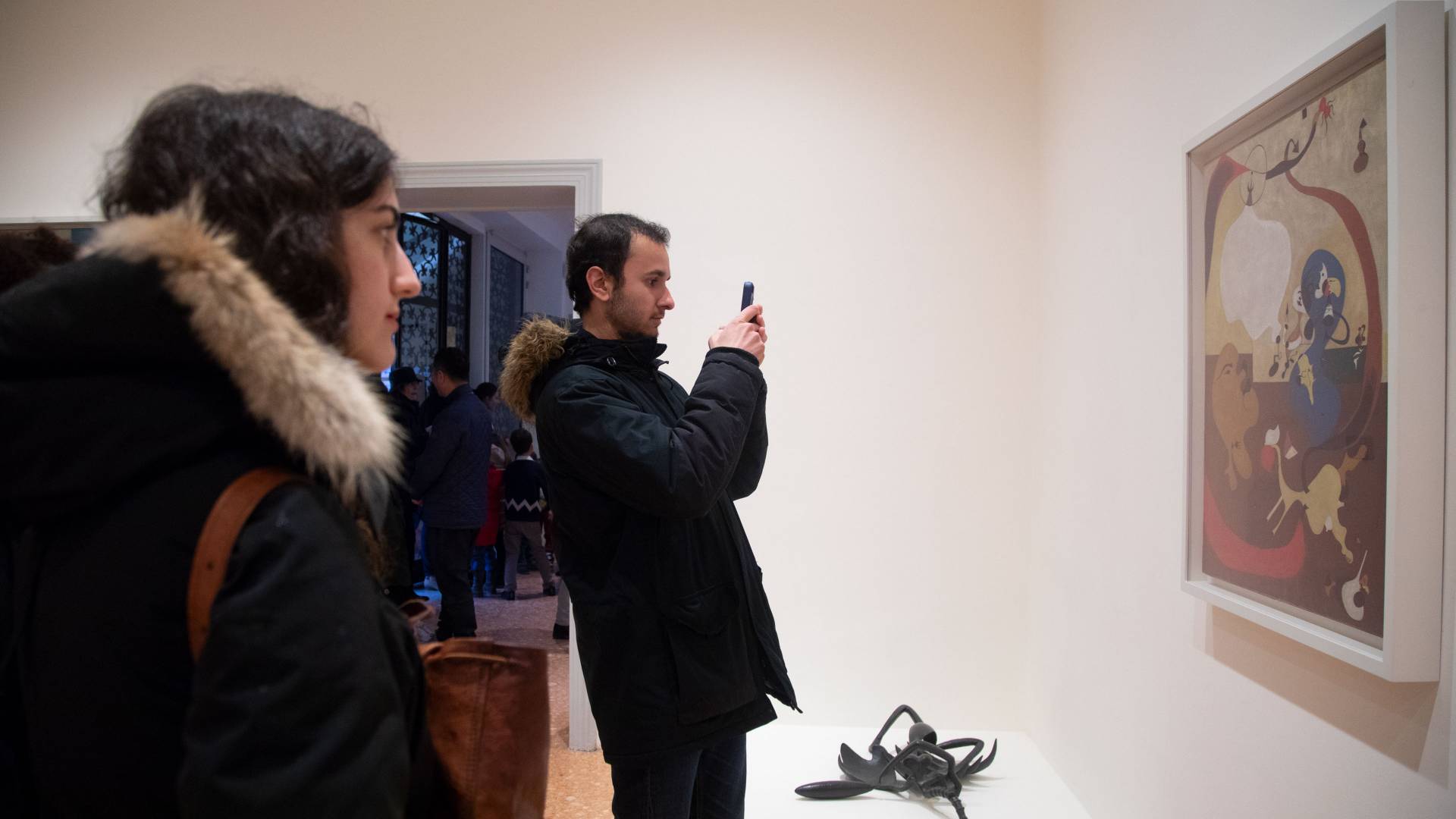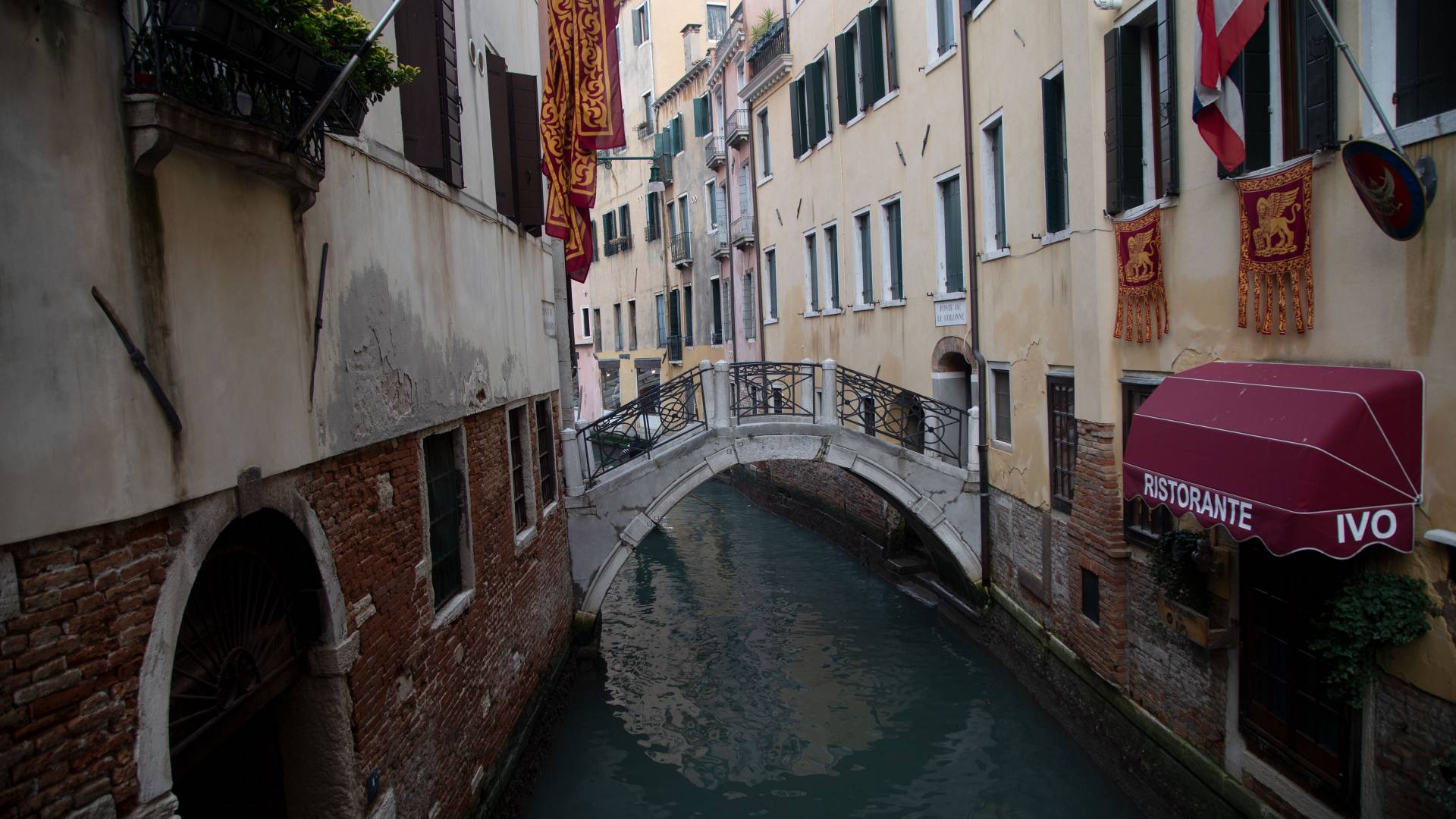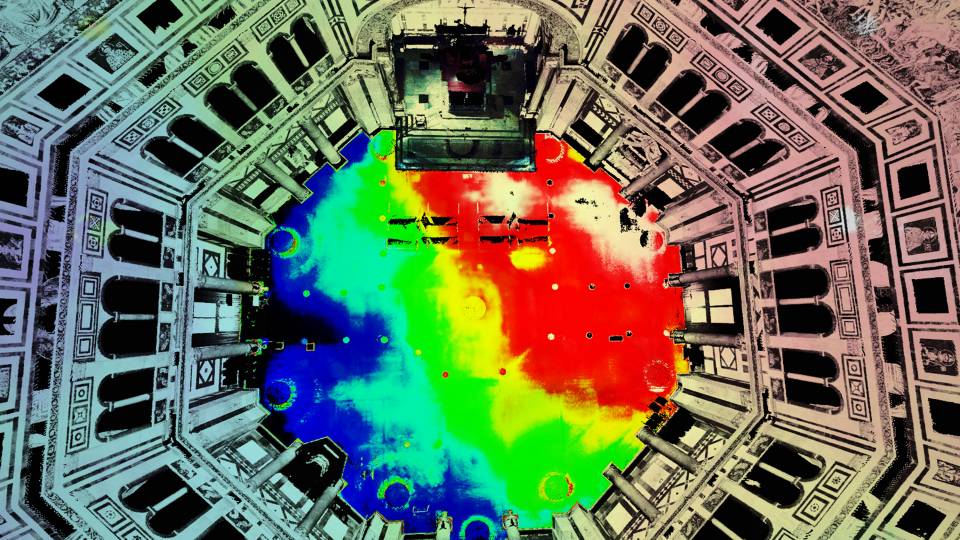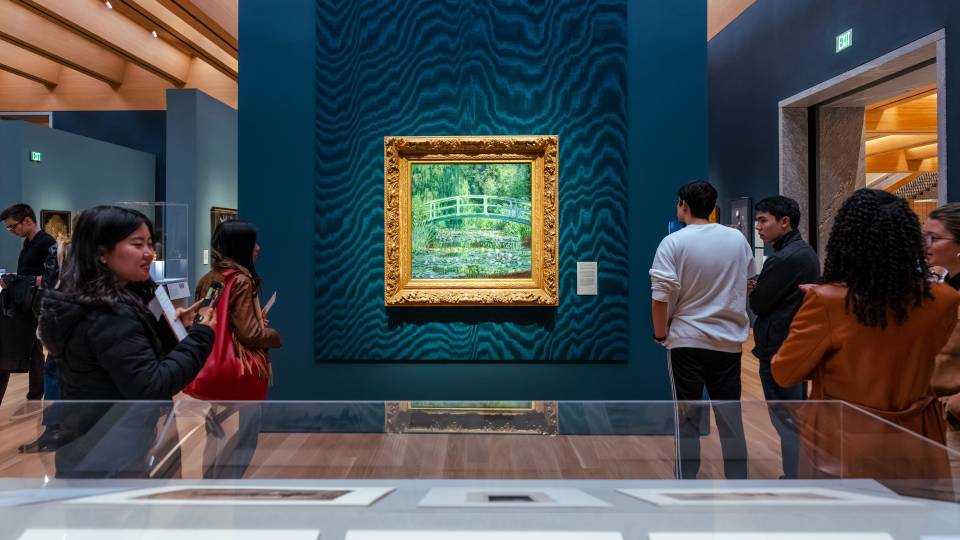To examine the enduring enigma of Venice, a new spring course at Princeton uses as its lens the theatricality of the city's unique topography, environment and geographic position. Moving between medieval and modern, from the stage to the streets, the course “Venice, Theater of the World" explores the eternal fascination of this place, built on millions of wooden pilings more than 1,500 years ago.
Structured thematically, the course explores over a millennium of music, art, literature and culture. Topics include the birth of public opera, Venice in fiction and film, the role of civic ritual, art and the environment, and the effects of climate change and tourism.
The class, which features a trip to Venice over spring break, is taught by Princeton professors Wendy Heller and Jamie Reuland.
Heller, the Scheide Professor of Music History, chair of the Department of Music and director of the Program in Italian Studies, and Reuland, assistant professor of music and 2014 graduate alumna, both fell in love with Venice when visiting the city to research their dissertations. Heller examined the representation of women in Venetian opera; Reuland explored the political and spiritual role that musical performance played in one of the most powerful cities in the medieval Mediterranean.
“We wanted students to come to know the city from all of its aspects, not just as scholars but as human beings, and to embrace the culture the way that we’ve embraced it,” Heller said. “We wanted students to understand all the layers of history that make this city so special,” Heller said. “Venice is both permanent and fragile ... and by understanding the fragility of Venice, they will be stewards for Venice for the future, and that’s what we all want.”
The class is crosslisted in the Department of Music, the Program in European Cultural Studies and the Program in Hellenic Studies. The course was funded in part by the David A. Gardner ’69 Project Grants in the Humanities Council.
Venice, medieval and modern
In the weeks leading up to the trip, students were immersed in the history and culture of the city through class discussion of readings ranging from the "The Travels of Marco Polo," written in the 13th century, to Jason Horowitz's August 2017 New York Times story "Venice, Invaded by Tourists, Risks Becoming Disneyland."
Patricia Fortini Brown, professor of art and archaeology, emerita, and a scholar of Italian Renaissance art, gave a guest lecture about Carpaccio's "Life of Saint Ursula," a cycle of paintings the class would see being restored in Venice.
Venice, lost and found
Ducking out of a spring rain that splashed over the narrow "calli" — streets and lanes — into the café of a small hotel, Esin Yunusoglu, Caroline Lippman and Peyton Lawrenz settled into upholstered chairs. Lippman recalled their arrival in Venice two days before. As the water taxi sped away from the airport and waves banged against the wooden sides, Lippman saw nothing but water and gray fog in all directions.
"Then the buildings just rose out of the water," she said. "I thought of all these characters in our readings, entering Venice for the first time, just like me." She recalled Henry James' 1888 novella "The Aspern Papers" and Thomas Mann's 1912 novella "Death in Venice."
Another afternoon, over “cicchetti” — appetizers of deep-fried cheese, artichoke hearts and marinated seafood — Heller said that as a graduate student, she would purposely "get lost" among the canal footbridges, labyrinthine streets and narrow alleyways of Venice. She pointed to the arrows painted on the corners of buildings, saying "Per Rialto" or "Per San Marco," which indicate the main thoroughfares. "Besides, you can't really get lost; you're on an island." Throughout the week, she and Reuland built in free time to encourage the students to explore on their own and prepare guided tours on various city squares, known as “campi,” which they presented on a whirlwind tour of Venice on the final day.
In the class blog, Lawrenz remembered the exhibition at the Princeton art museum and wrote: "Venice seems to be filled with small, beautiful corners and moments. Moments are framed in poetry, in picturesque aesthetics as captured by Stieglitz, and in the romantic deterioration of all that was and all that can/will no longer be."
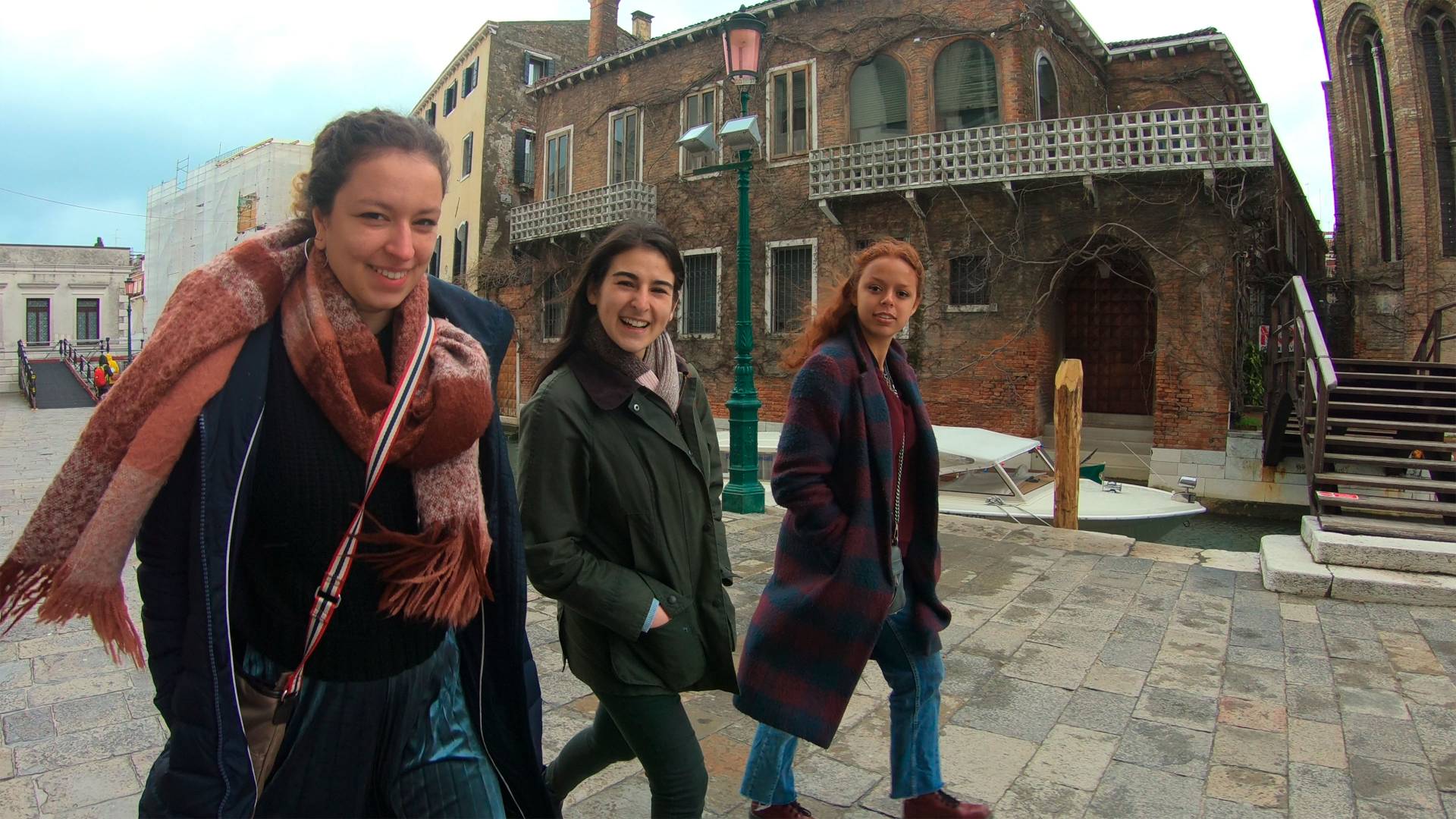
Esin Yunusoglu (left), Caroline Lippman and Peyton Lawrenz — all members of the Class of 2019 — enjoy an afternoon walk along the streets of Venice before a visit to the Peggy Guggenheim Foundation.
'Architectural bling' and the reincarnation of masterpieces
Tapping their “vaporetto” passes against the electronic reader, the students stepped aboard just as the conductor clanged the metal gate shut and unwound the thick sea rope, releasing the ferry on its way across the Grand Canal.
As the Piazza San Marco came into view, the cawing of seagulls pierced the air and pigeons dive-bombed past the two huge columns that stand sentry on the piazza.
"These columns, or the City Gates, were Venice's calling card to the world," said Susan Steer, an art historian who met the students for a guided tour of the Doge's Palace, and was their guide on the islands of Torcello and Murano, and in the Basilica of San Marco.
"As you look up at the façade, you see the influences from trading throughout the East and the Mediterranean, Syria, Constantinople, Egypt — a palimpsest of architecture," Steer said. As if on cue, the sun broke through the clouds, illuminating the gold leaf and brilliant colors the students had read about in Deborah Howard's book "Venice and the East."
As the group ascended a grand staircase with a gold-painted ceiling, Steer explained that the gilded surfaces throughout the Doge's Palace created "architectural bling" designed to impress visitors.
In the Sala del Collegio, Steer stopped to discuss the ceiling paintings by Veronese. Pointing to the center panel, also framed in brilliant gold, she indicated a female figure floating on a fluffy white cloud and holding a chalice.
"Venice was built on marshland," Steer said, "so it was believed that it was her faith that held her up. The chalice represents that faith."
From Carpaccio to Jackson Pollack
In a massive workroom, tucked out of sight from the public galleries of the Accademia Museum, Carpaccio's Saint Ursula cycle is being restored. During a private tour led by Leslie Contarini of the American organization Save Venice Inc., which is funding the multi-year project, students observed conservation technicians on high scaffolding set up in front of the enormous panels.
The tools of art restoration, Contarini said, range from low-tech to high-tech. Japanese rice paper is used to remove varnish in places where there is a high concentration of restorations, and chalk is used to mark off areas being worked on. Ultraviolet and infrared light and computer simulations allow the restorers to see the underdrawings that give clues to the artist's original intent.
Fast-forwarding centuries, students spent an afternoon at the Peggy Guggenheim Collection, the museum that Guggenheim opened in 1949 in an unfinished 18th-century palazzo on the Grand Canal to house her eclectic contemporary art collection. Jill Weinrich, an arts administrator and cultural liaison who has worked with Save Venice Inc., the Venice Biennale and other nonprofit organizations, and who helped coordinate the trip, reminisced with the students about falling in love with Venice, her adopted home for more than 20 years, while she was a student intern at the Guggenheim.
Works of contemporary art from cubism and surrealism to abstract expressionism are juxtaposed against the architecture of the palazzo. Jackson's Pollack's 1946 painting "Croaking Movement" hangs above an ornately carved mantelpiece in a small salon full of his works; Marino Marini's 1948 "Angel of the City" bronze sculpture flanks the palazzo's front door, mere feet from the water.
'Stones of Venice'
The Basilica di Santa Maria Gloriosa dei Frari, known simply as I Frari, contains Titian's "Assumption of the Virgin," considered the largest altarpiece in Venice, and many other famous artworks spanning 500 years of Venetian history. Seeing the "Assunta," as it's called in Italian, senior Kevin Hayne recalled reading art historian John Ruskin's "Stones of Venice" a month before the trip.
"Ruskin talked about how each little piece of Venice can represent a part of the whole," Hayne said. Students were asked to bring to class their own "stone of Venice" — an artifact of art, film, literature, pop culture or news media that represented the way Venice was capturing their interest. "One student brought in a picture that she had taken of Titian's 'Assunta' from a previous visit," Hayne said.
'Acqua alta': Ephemeral Venice
After just a couple of days traveling from site to site on the vaporetto, the students remarked that even while standing on solid ground it felt like it was gently rocking beneath them. Some said that their dreams were filled with water imagery.
Reuland said this is a common "side effect" of spending time in Venice. As the students checked their bags at one museum, where they could look down and see the water coming up to and under the building's canal-side door, Reuland recalled her first visit to Venice to do dissertation research.
"I spent the month of September in a palazzo overlooking the Grand Canal — and you just had this overwhelming sense that you were floating," she said. "Looking out the window, going to bed, waking up, you hear the sounds of boats going by, everything is watery, the sounds are all of nautical activity."
At the start of the class trip, the heavy rains that fell upon the city combined with high tide and strong winds, creating a phenomenon called “acqua alta,” or high water. The canal water rises and spills over onto the “masegno,” the special stone used on Venetian streets. When acqua alta is predicted, city workers assemble “passarelle,” raised platforms that form elevated walkways.
In the class blog, senior Daniel Wood wrote: "I can hear the acqua alta sirens in the background, warning residents and visitors of the impending flooding as the spring tides draw water over the edges of the canals. The sound is a bleak reminder of how perilous this city’s future is, and what a miracle it even is for this city to exist in the first place."
Venice, the birthplace of public opera
Hayne, who is majoring in Spanish and Portuguese, said he took the course to expose himself to musicology and music history. One evening the students saw Puccini's "La Bohème" at the famed La Fenice theater. That afternoon, Hayne, who had never been to the opera, asked Heller to summarize the plot and give him some pointers for watching the opera.
"Professor Heller explained how the opera was a wonderful way to bring different people together from different parts of the city, from different socioeconomic backgrounds ... to be able to enjoy a beautiful art form that was a really important part of the city's history," he said.
He described the performance — particularly the famous aria "Che gelida manina," in which the two main characters meet and fall in love — as "moving and incredible."
The students experienced another facet of musicology at the Giorgio Cini Foundation, an international center for research on all aspects of Venetian culture, where the students stayed during their visit. Gianmario Borio, director of the Institute of Music — one of several research institutes at the foundation — discussed selections from the rich archival collection, including handwritten letters and manuscripts by 20th-century Italian composers.
Study abroad: Coming 'full circle' in Venice
At Oke Pizzeria in the Dorsoduro neighborhood, senior Catalina Zhao ordered the "folded pizza" from the menu of more than 80 options.
As she broke open the giant poofed upper crust to reveal a gooey marriage of mushrooms, artichokes, ham, spicy pepperoni and mozzarella, Zhao said her interest in Italy was sparked her first year at Princeton during a freshman seminar on Dante taught by Simone Marchesi, associate professor of French and Italian. An economics major, Zhao said she chose the Venice course because she was interested to learn about the ancient trade routes of Venice.
"In taking this class, I have closed the loop that my previous international opportunities created," she said. During an internship in Shanghai the summer after her first year, she visited Suzhou, a city nicknamed "Venice of the East." While studying economics at Oxford University her junior spring semester, she visited Amsterdam and marveled at its picturesque canals. "Visiting Venice has brought me full circle in my engagements with three different places with unique cultures, societies, histories and politics, but that are all woven together by a common thread," she said.
A fragile nexus: Art and the environment
On a walking tour, geoscientist Luca Zaggia discussed environmental threats to Venice caused by climate change and tourism. These include the damage caused by the giant cruise ships that come through the Grand Canal daily, displacing the water and exposing the centuries-old pilings that Venice is built on to oxygen — and deterioration.
"What I'd like [students] to take away is the idea of the deep connections that art shares with the environment that supports it and also threatens it," Reuland said. She hopes students will gain an understanding that Venice and environmental forces have always been intertwined and that "beauty is something that literally happens from the ground up."





